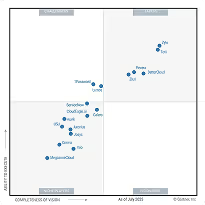HIPAA Compliance Checklist for 2025

Corporate compliance in 2025 is no longer just documentation; it’s an always-on requirement. With SaaS usage exploding and regulations tightening, companies are struggling to keep up.
According to Gartner, 91% of organizations use SaaS applications, creating complex, decentralized environments that require continuous compliance oversight.
Another Statista report shows SaaS adoption has grown 5x in the last decade, making manual compliance unmanageable for most IT and security teams.
This is exactly why organizations are now adopting a SaaS compliance platform to automate controls, streamline audits, and maintain compliance across every tool, every user, and every department.
Below, we break down what a SaaS compliance platform does, why it matters in 2025, and the 10 best platforms for automating corporate compliance.
TL;DR
- SaaS compliance platforms automate evidence, controls, and monitoring across all cloud tools.
- They reduce audit effort, strengthen security, and maintain year-round compliance.
- The top platforms include CloudEagle.ai, Vanta, Drata, Secureframe, and Hyperproof.
- CloudEagle.ai stands out with deep governance, access automation, and full SaaS visibility.
- Automation is now essential for corporate compliance in fast-scaling SaaS environments.
What Is a SaaS Compliance Platform?
A SaaS compliance platform is a cloud-based system that standardizes and automates compliance workflows for frameworks like SOC 2, ISO 27001, GDPR, HIPAA, and PCI DSS.
It centralizes risk management, evidence collection, access controls, policy management, and continuous monitoring, replacing spreadsheets with real-time compliance automation.
Platforms integrate with your SaaS stack, infrastructure, SSO, HRIS, and cloud services to generate audit-ready documentation and maintain a continuous compliance posture.
Why Businesses Need a SaaS Compliance Platform
Compliance isn’t just more demanding, it’s more continuous.
Remote work, AI adoption, and decentralized SaaS tools have created new risks.
IBM’s Cost of a Data Breach Report found that 82% of breaches involve data stored in SaaS or cloud systems, highlighting the need for stronger compliance automation.
Businesses choose corporate compliance software because:
- Regulations require evidence-based continuous monitoring.
- Audits demand automated logs, not manual screenshots.
- Controls must be updated dynamically as SaaS stacks evolve.
- IT and security teams can’t scale manual governance.
With the average organization now using 130+ SaaS applications, an enterprise compliance platform has become a necessity, not a luxury.
Best SaaS Compliance Platforms
1. CloudEagle.ai
CloudEagle.ai is one of the most comprehensive SaaS governance and compliance automation platforms designed for enterprises that manage hundreds of cloud tools.
Unlike traditional compliance software that focuses only on audits, CloudEagle centralizes SaaS visibility, access governance, vendor compliance, and continuous monitoring in one place.
CloudEagle goes beyond standard automation by offering deep integrations, AI-driven insights, and real-time remediation workflows.
A. Full SaaS Discovery & Complete Visibility
CloudEagle gives IT, Security, and Compliance teams 100% visibility into every SaaS and AI tool in use, including sanctioned and shadow apps.
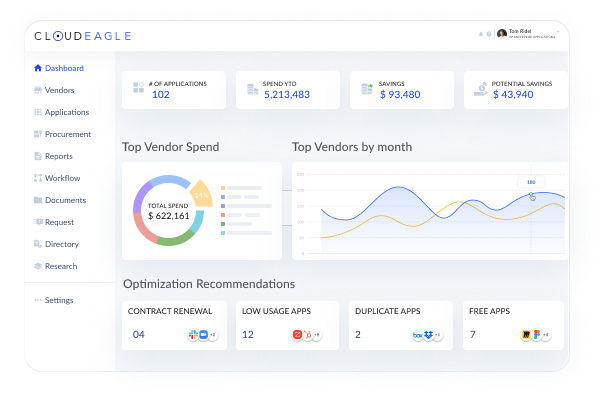
This visibility is powered by 500+ direct connectors, identity logs, finance system data, and browser/SSO activity tracking.
B. Automated Access Reviews (Continuous, Not Quarterly)
Traditional quarterly or annual access reviews are slow, error-prone, and easy for auditors to challenge.
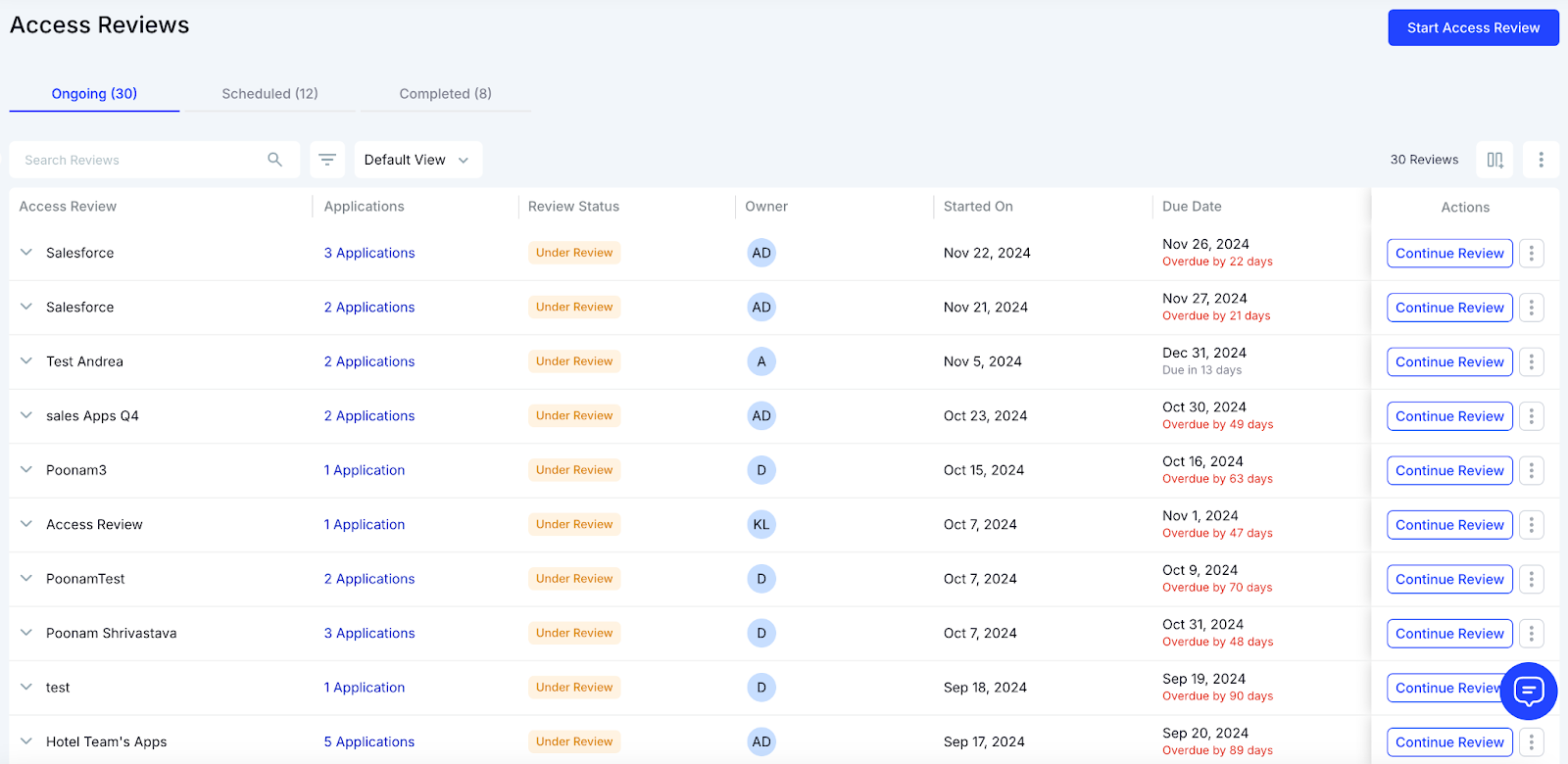
CloudEagle automates the entire review cycle by:
- Pulling real-time identity & usage data from all apps
- Auto-highlighting risky or overprivileged users
- Triggering manager or application-owner certification workflows
- Automatically deprovisioning rejected access
C. Audit-Ready Logs & Complete Evidence Automation
Most companies scramble for weeks to prepare evidence for SOC 2, ISO 27001, HIPAA, PCI, or GDPR audits.
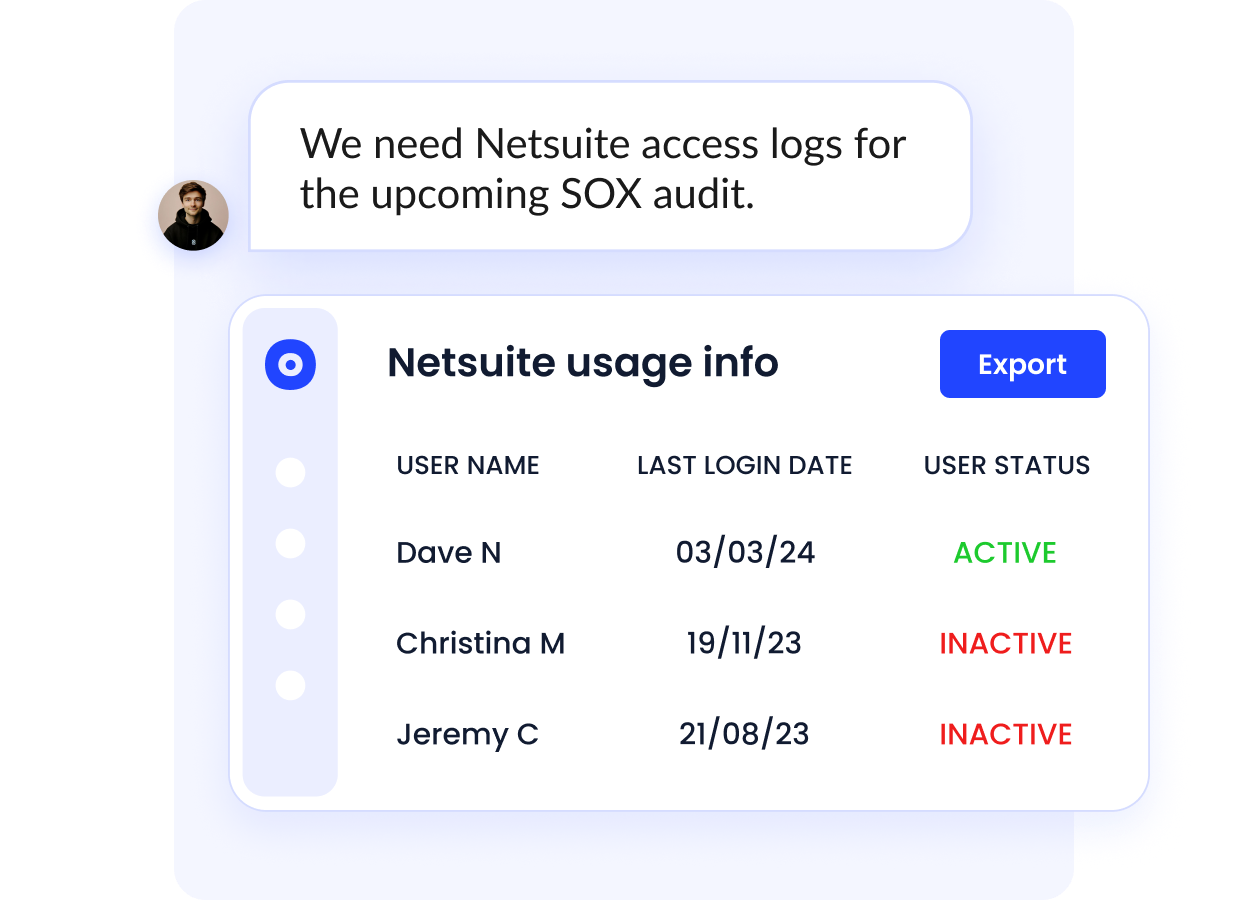
CloudEagle eliminates that scramble with:
- Centralized, tamper-proof ,audit-ready logs
- Auto-generated evidence packages for user access, provisioning actions, approvals, and role changes
- Continuous monitoring of compliance events
D. Risk Scoring for Apps, Users & Access
CloudEagle introduces intelligent risk scoring to help compliance and IT teams prioritize threats.
The platform flags:
- High-risk apps (unapproved, AI tools, missing compliance certifications)
- High-risk access (privileged roles, unused elevated permissions)
- High-risk users (shadow IT behavior, excessive privileges, unreviewed access)
E. Automated Provisioning / Deprovisioning & RBAC Enforcement
Manual onboarding and offboarding are one of the biggest sources of audit failures and insider-risk incidents.
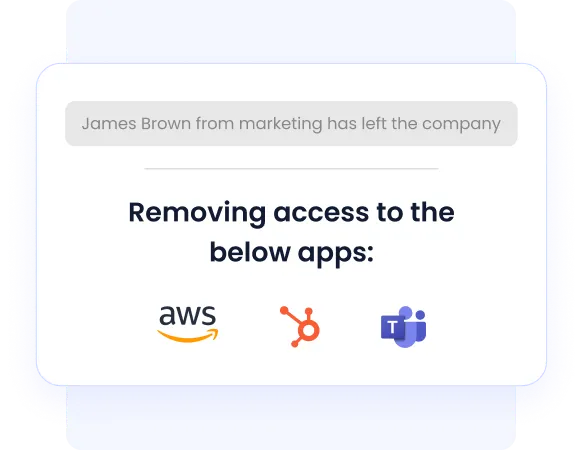
CloudEagle solves this by automating:
- Role-based provisioning
- Zero-touch offboarding across all apps, even those not behind Okta/SailPoint
- Time-based access for contractors
- Least-privilege enforcement
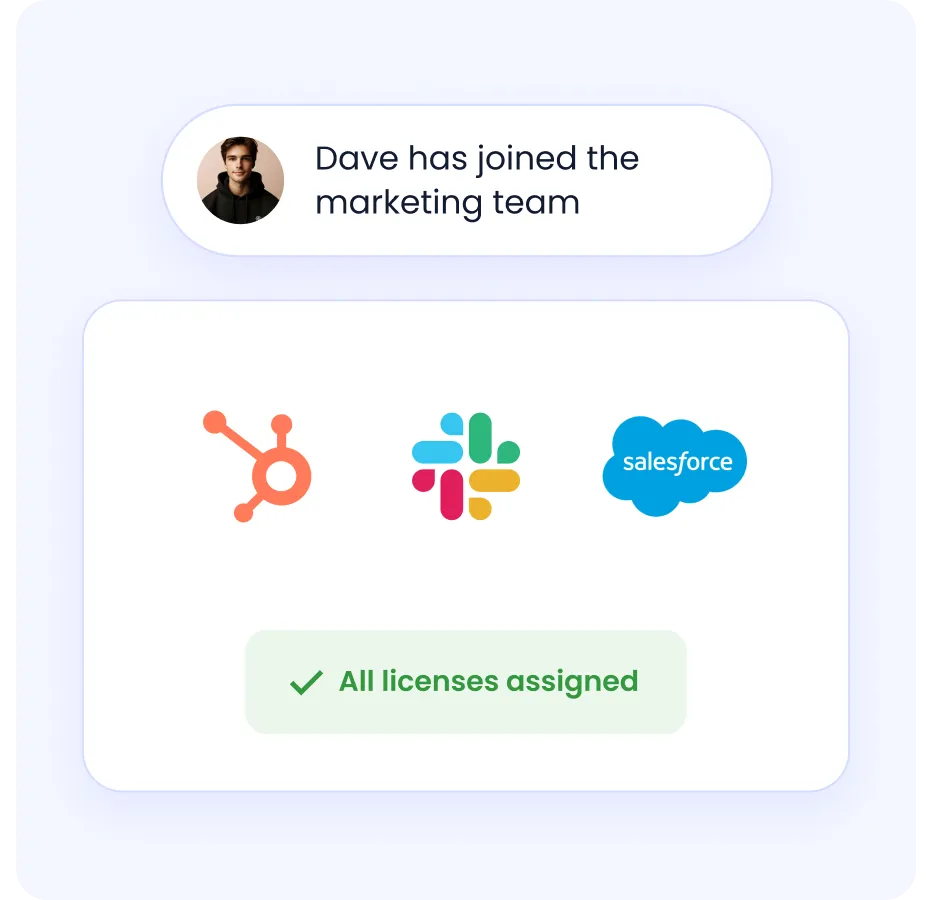
F. Continuous Compliance Monitoring
Unlike legacy tools that review compliance periodically, CloudEagle monitors:

- App usage
- Access rights
- Privileged role changes
- Anomalous behavior
- Permission spikes
- Shadow IT app adoption
G. Vendor Compliance Tracking
Compliance isn’t just internal; your vendors matter too.
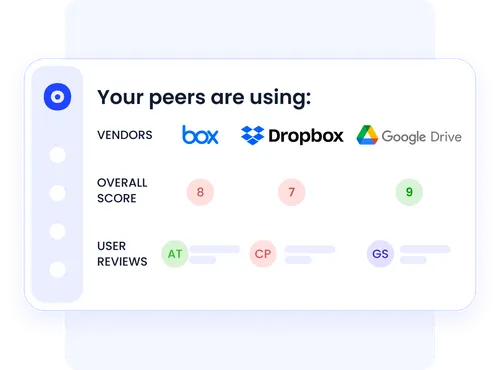
CloudEagle centralizes:
- Security certifications (SOC 2, ISO 27001)
- Contract terms
- Renewal dates
- Security questionnaires
- Risk insights
- Vendor history
Benefits
- End-to-end compliance coverage — manage controls, access, and audits in one platform
- Accelerated audit readiness — automated evidence and continuous monitoring cut prep time significantly
- Reduced compliance risk — instant alerts for policy violations or non-compliant access
- Unified governance — combines SaaS management + compliance automation for complete oversight
- Lower operational workload — eliminates repetitive evidence, policy, and access tasks
- Improved access security — auto-removes stale access and enforces least privilege
- Stronger vendor compliance — know which tools fail security benchmarks instantly
- Better cross-team alignment — IT, security, and compliance all work from one shared system
Pricing
CloudEagle typically ranges from $5,000 to $50,000+ annually, depending on organization size, integrations, and compliance automation needs.
2. Vanta
Vanta is one of the most well-known platforms for automated compliance and audit preparation. It is widely adopted by companies preparing for SOC 2 or ISO certification for the first time.

Vanta focuses on simplifying early-stage compliance and providing continuous monitoring for security controls.
Features
- Automated evidence collection for SOC 2, ISO, HIPAA, PCI, GDPR.
- Continuous monitoring for cloud and IT systems.
- Policy templates and pre-built auditor workflows.
- Integrations with major cloud and identity tools.
Limitations
- Costs rise significantly as teams scale.
- Limited customization for complex enterprise workflows.
- Heavy dependency on integrations for full visibility.
Pricing
Starting around $3,000/year, with complete SOC 2 packages priced $10,000–$15,000/year.
3. Drata
Drata is a compliance automation platform built to help organizations maintain continuous compliance at scale. It focuses on automated tests, real-time monitoring, and audit preparedness.

Drata is a strong fit for fast-growing companies that need automated SOC 2 and ISO programs with strong control mapping.
Features
- Continuous control monitoring.
- Risk management and reporting dashboards.
- Automated readiness workflows.
- Auditor-approved control libraries.
Limitations
- Vendor risk workflows are limited.
- Advanced customization is available only in higher plans.
Pricing
Starts around $6,000/year.
4. Secureframe
Secureframe provides comprehensive compliance automation for SOC 2, ISO, PCI, HIPAA, and GDPR. It’s strong for companies looking for everything from employee security training to risk management.

Its compliance dashboard keeps teams aligned on progress, ownership, and evidence collection.
Features
- Automated control, tracking, and reminders.
- Vendor risk management and compliance document storage.
- Employee onboarding and security training.
- Continuous monitoring for misconfigurations.
Limitations
- More expensive for smaller teams.
- Larger enterprises may require more customization.
Pricing
Typically $7,000–$12,000/year.
5. OneTrust (Tugboat Logic)
OneTrust helps teams prepare for audits with ready-made control libraries and automated evidence workflows. Its strengths lie in SOC 2 and ISO readiness.
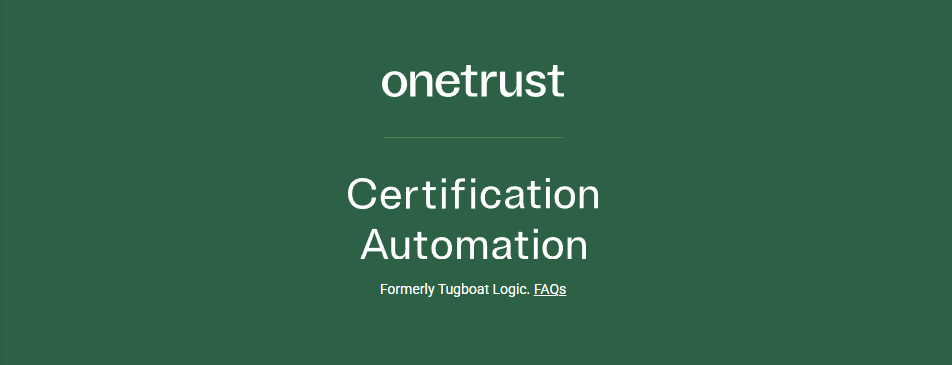
The platform includes guided workflows, making it easier for non-technical teams to follow structured compliance processes.
Features
- SOC 2 and ISO readiness assessments.
- Security policy automation.
- Control libraries and evidence storage.
Limitations
- The user interface can feel outdated.
- Limited advanced access governance.
Pricing
Usually $5,000–$15,000/year.
6. Hyperproof
Hyperproof is built for enterprises looking to manage multiple frameworks, risks, and compliance workflows in one platform.

It centralizes risk scoring, issue tracking, and cross-framework mapping, making it easier for large organizations to scale compliance.
Features
- Cross-framework control mapping.
- Deep risk management and issue tracking.
- Workflow orchestration for compliance programs.
- Evidence repository and dashboards.
Limitations
- Requires configuration and dedicated admin effort.
- Expensive for smaller teams.
Pricing
Starts around $25,000+/year.
7. LogicGate Risk Cloud
LogicGate’s Risk Cloud is a customizable GRC platform for building governance, risk, and compliance workflows.
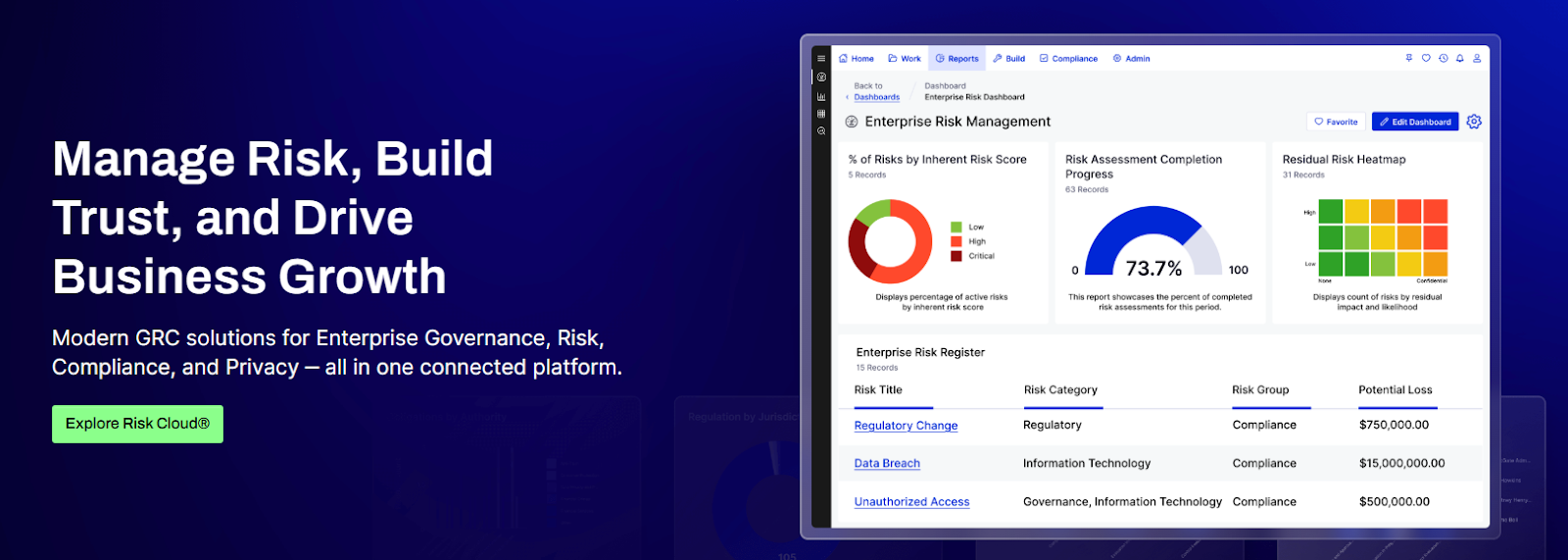
It allows teams to configure their own processes using no-code building blocks.
Features
- Build-your-own compliance workflows.
- Integrated risk and vendor management.
- Dashboards for monitoring compliance progress.
Limitations
- High setup effort compared to plug-and-play tools.
- May require ongoing admin maintenance.
Pricing
Typically $40,000+/year.
8. AuditBoard
AuditBoard is widely used by large enterprises for SOX management, audit workflows, and internal controls.

It’s built for governance and risk programs at scale, with deep reporting functionality.
Features
- Audit workflow automation.
- Risk assessment and control testing.
- Evidence collection and documentation.
Limitations
- Expensive and enterprise-focused.
- Requires dedicated training for full value.
Pricing
Enterprise-only, often $50,000+/year.
9. Thoropass
Thoropass serves startups and mid-market companies looking for guided compliance support.

It combines software with advisory services to help teams achieve SOC 2 and ISO certifications.
Thoropas’s human-assisted model makes compliance less intimidating for smaller teams.
Features
- Guided SOC 2 readiness.
- Policy development templates.
- Evidence management and auditor coordination.
Limitations
- Not ideal for large enterprises.
- Limited access governance capabilities.
Pricing
Ranges from $5,000–$10,000/year.
10. Sprinto
Sprinto is designed for cloud-native companies that need fast, automated compliance.

It integrates deeply with cloud infrastructure to assess configurations and enforce controls.
Good option for engineering-led companies that want code-level compliance monitoring.
Features
- Automated monitoring of cloud misconfigurations.
- Policy workflows and evidence collection.
- Auditor integrations for SOC 2, ISO, and PCI.
Limitations
- Not as strong for vendor compliance.
- Fewer enterprise features.
Pricing
Starts at $7,500+/year.
How a SaaS Compliance Platform Works?
A SaaS compliance platform works by centralizing your controls, automating evidence collection, and continuously monitoring your SaaS stack for risks or violations. Instead of scattered spreadsheets, everything is connected, updated in real time, and audit-ready.
Below is a clean breakdown of how it actually works.
Integrates With Your SaaS, Cloud, SSO, and HR Systems
- Connects to tools like Okta, Entra ID, Google Workspace, HRIS, AWS, and all major SaaS apps
- Pulls real-time data on user access, permissions, configurations, and activity
- Synchronizes employee lifecycle events (joiners, movers, leavers) for automated compliance
Maps Controls Across Frameworks Automatically
- Pre-maps your environment to SOC 2, ISO 27001, HIPAA, GDPR, PCI DSS
- Reduces manual effort by assigning controls to owners with automated reminders
- Tracks progress for each control so nothing gets missed during audits
Automates Evidence Collection and Audit Prep
- Gathers screenshots, logs, configurations, and access data automatically
- Stores evidence in a central audit-ready repository
- Keeps documentation versioned, tagged, and aligned with compliance frameworks
Continuously Monitors Risks and Configurations
- Detects misconfigurations, over-privileged users, policy violations, and dormant access
- Sends real-time alerts to security and compliance teams
- Automatically updates audit logs as your SaaS environment changes
Supports Ongoing Audit Management and Reporting
- Generates auditor-friendly reports
- Tracks remediation actions and escalations
- Provides historical compliance data for internal or regulatory audits
Key Features of a SaaS Compliance Platform
Key features of a SaaS compliance platform include automated evidence collection, centralized dashboards for unified visibility, and continuous monitoring to detect issues in real-time.
Other crucial features are automated risk assessments, audit-ready reporting, and support for various frameworks like SOC 2 and GDPR.
Automated Evidence Collection
Automates the capture of logs, screenshots, configs, and control outputs from all SaaS and cloud systems.
Ensures teams no longer rely on manual screenshots or scattered folders.
Benefits:
- Eliminates repetitive evidence collection tasks
- Ensures evidence stays audit-ready year-round
- Reduces human error in compliance documentation
This automation dramatically accelerates SOC 2 and ISO audit timelines.
Access Governance & RBAC
Monitors who have access to which applications and enforce least-privilege permissions.
Automates provisioning, deprovisioning, and periodic access reviews for cleaner governance.
Benefits:
- Reduces risk from excessive or outdated permissions
- Strengthens data security across all SaaS apps
- Simplifies access audits with unified logs
By pairing RBAC with continuous monitoring, teams maintain airtight access hygiene.
Continuous Compliance Monitoring
Tracks changes in configurations, policies, and user activity across SaaS, identity, and cloud systems.
Alerts teams when something drifts out of compliance or violates a framework requirement.
Benefits:
- Immediate detection of compliance risks
- Supports real-time audit readiness
- Prevents control failures before audits occur
This ensures compliance is a continuous state, not a one-time annual exercise.
Policy & Control Management
Provides a central library of policy templates aligned to SOC 2, ISO, HIPAA, PCI, and GDPR.
Manages version control, review cycles, and employee acknowledgment tracking.
Benefits:
- Keeps all compliance policies consistent and updated
- Simplifies onboarding and employee compliance training
- Reduces time spent writing and maintaining documents
It helps teams maintain strong internal governance with minimal effort.
Final Thoughts
SaaS compliance is no longer a once-a-year project; it requires continuous visibility, automated evidence collection, and strong access controls. As SaaS stacks grow, manual processes simply can’t keep up, and teams risk falling behind regulatory demands.
A modern SaaS compliance platform brings everything together in one place: controls, audits, access logs, vendor risk, and real-time monitoring. These platforms reduce manual work, improve audit readiness, and ensure organizations stay compliant across multiple frameworks.
For enterprises that want a unified system combining governance, access, compliance automation, and full SaaS visibility, CloudEagle.ai delivers the most complete solution. Its automation, monitoring, and integrations help teams stay secure, audit-ready, and fully aligned across their entire SaaS landscape.
Book a free demo with CloudEagle.ai to streamline your compliance.
Frequently Asked Questions
1. How does a SaaS platform help automate compliance processes?
A SaaS compliance platform automates evidence collection, control monitoring, access reviews, policy management, and audit workflows. It reduces manual work and ensures continuous, real-time compliance across all tools and systems.
2. What is ISO compliance for SaaS?
ISO compliance for SaaS refers to meeting global security standards like ISO 27001. It ensures a SaaS provider has strong controls for data protection, risk management, access security, and continuous monitoring across its systems and operations.
3. What are enterprise compliance services?
Enterprise compliance services help large organizations manage regulatory requirements, risks, audits, controls, policies, and security standards. They streamline compliance across departments and ensure ongoing adherence to frameworks like SOC 2 and ISO.
4. What is the best compliance platform?
The best compliance platform depends on your needs, but CloudEagle.ai, Vanta, Drata, and Secureframe lead the market. CloudEagle stands out for combining compliance automation, SaaS visibility, and access governance in one unified platform.

%201.svg)










.avif)




.avif)
.avif)




.png)
